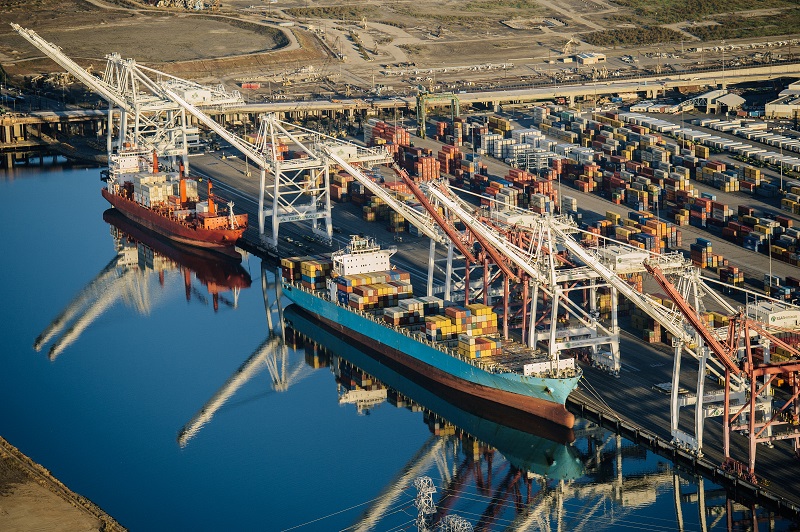
You would have to live under a rock to have not heard about the bottleneck in our supply chain at our nation’s ports. I took some interest in this, not only because of hearing it on the news but from talking to some of our own TMS Digital intermodal clients using our dispatch software for their business.
This “log-jam” is causing a serious delay in product and merchandise deliveries, as well as price increases. In addition, as intermodal carriers, you are well aware of the downtime, when your trucks are backed up for miles and hours, waiting to be loaded at the ports.
Whose fault is this?
We hear people, unfairly, blaming truck drivers, but there is so much more involved. Logistics involves so much more than trucking.
The Covid pandemic has affected far more than folks having to wear masks or getting vaccinations, not to mention the unfathomable loss of life. The pandemic has disrupted every aspect of the global supply chain. During the early days of the pandemic, manufacturing factories in parts of the world with the highest production were forced to shut down. At the same time, demand increased for many products from lifestyle changes due to people having to work from home, not to mention homeschooling their children.
This included office supplies, furniture, classroom tools, entertainment, food deliveries, home improvement materials. With the pandemic, production forecasters expected less demand, when just the opposite turned out to be true.
Even when factories were able to ramp up production, they were dependent on other factories for some pieces for assembly. More delays.
Finished products piled up at warehouses, due to a shortage of shipping containers and chassis.
Labor shortages and possible solutions
There is an ongoing challenge to find workers. Warehouse space is another issue. The Transportation Department has offered California up to $5-billion-dollar loan to improve its logistics infrastructure, including building more warehouses.
As I mentioned, earlier, logistics involves much more than trucking, including ships, air, rail, distribution centers, and retail. That being said, truck drivers carry more than 70 % of cargo moving through the United States. Moreover, with the driver shortage, estimated to be about minus 80,000 drivers, getting goods out of the port supply chain and distributed through the country has been an additional challenge.
Federal lawmakers are pushing for the Department of Transportation to approve a pilot program that would allow younger drivers, between 18 – 20, to drive across state lines if they complete extra training. Improvements in driver pay and truck parking would also help attract more drivers.
Hotshot truckers
Hotshot truckers may occasionally haul containers, but with the weight of the container and wind drag, mileage is poor and often isn’t worth the cost of fuel. Not to mention, having to load and unload without a crane.
How consumers and the environment are being effected
After mentioning some of the causes, let us talk about the effect. Number one is of course price increases. Items like groceries, lumber, vehicles, etc., the list goes on.
Something I was not aware of until I started researching this, was the volume of pollution created by the diesel engines of all the ships, which are backed up at the ports, waiting to be unloaded.
A bit more on this from the Guardian:
“The Ports of Long Beach and Los Angeles, two of the nation’s busiest, create more than100 tons a day of smog and other cancer-causing contaminants that choke local communities – rivaling roughly 6m cars on the roads across the region each day.”
Needless to say, the pollution is affecting the nearby neighborhoods. Moreover, that is not all that is happening.
This is from KTLA5, in Los Angeles:
A Los Angeles neighborhood just outside the nation’s busiest port complex has become a perpetual traffic jam, with trucks hauling cargo containers backed up day and night as workers try to break through an unprecedented backlog of ships waiting to unload.
About 40% of all shipping containers entering the U.S. come through the Los Angeles and Long Beach ports.
How TMS Digital Helps you in this
Here at TMS-Digital, sympathize with all who are feeling the effects of the backlog in one way or another. In addition, while we cannot offer a solution to speed up the unloading process at the ports, we can offer you a great dispatch program that keeps your company on track, whether you are intermodal, brokerage, TL, or LTL carriers. We have helped the trucking industry with our software for over 30 years and our dispatching system is highly configurable to fit each individual company and its unique needs. TMS-Digital Dispatch software for trucking companies comes with a Fuel Card interface and an Accounting interface. Stored on secure servers with 24/7 IT support and fantastic software support, leaving you with no worries that your data is safe! Contact us today for a free demo.




